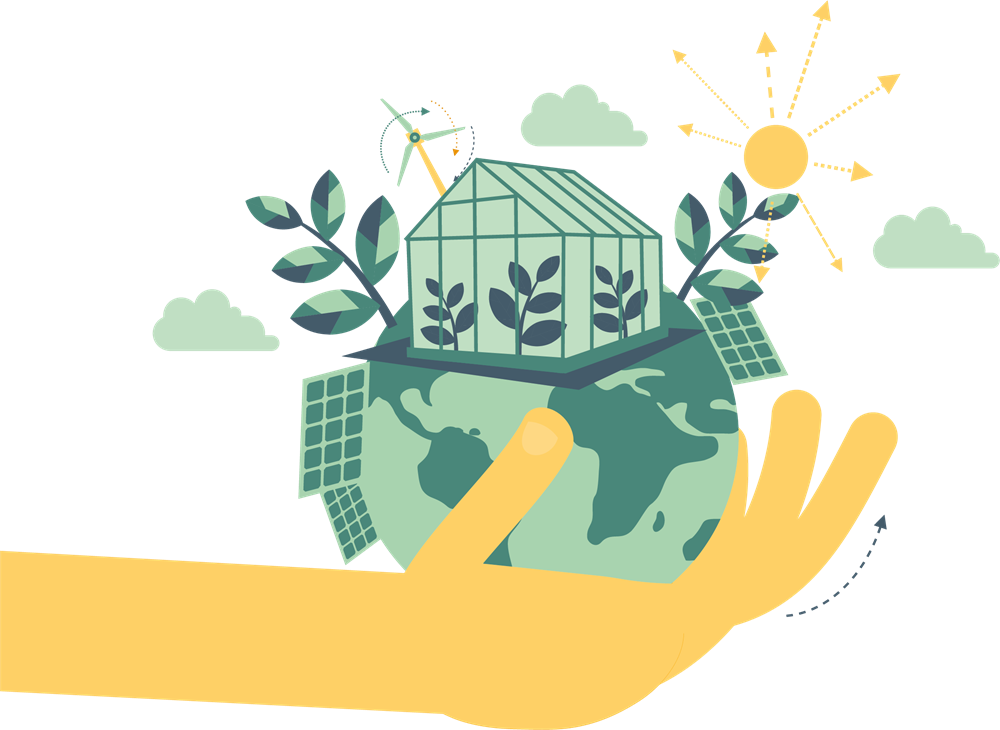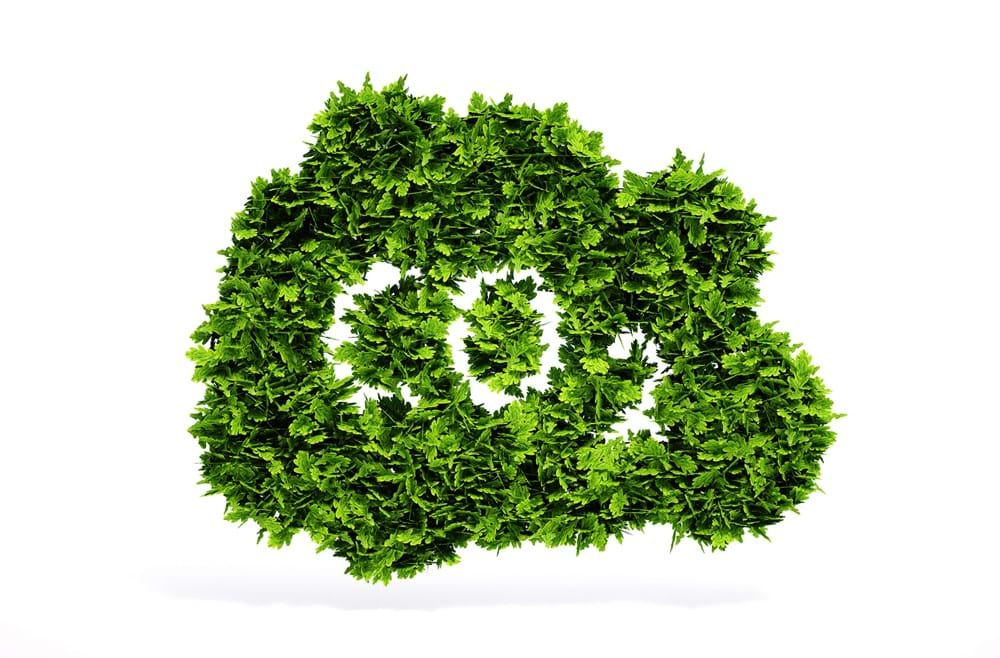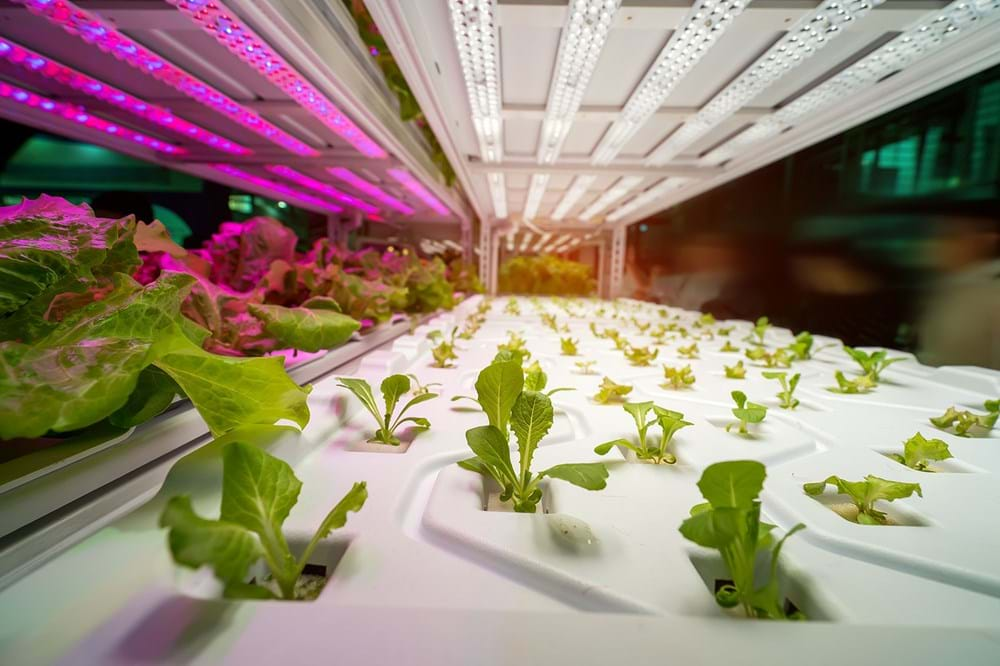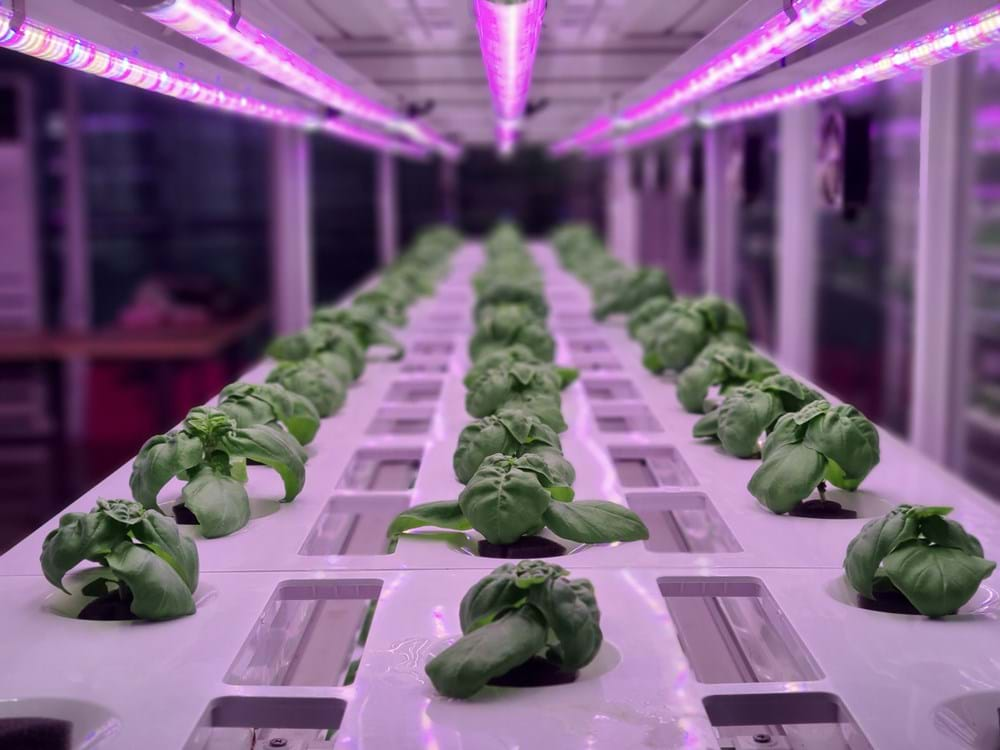Greenhouse horticulture is using energy more and more efficiently. It is mainly due to increased productivity and innovations in the energy field. But in absolute terms, the sector's energy consumption is still substantial and contributes - through CO2 emissions - to global warming.
Saving energy remains of crucial importance. At the same time, greenhouse horticulture benefits from climate change.
The Tipping point
Climate change has become an increasingly urgent issue since the turn of the century. Climate measures resulting from the Paris Agreement and the recent Brussels Agreement (55% less CO2 emissions in 2030 compared to 1990 and climate-neutral in 2050) should counter this, but the practice is difficult.
According to the KNMI, a new cabinet will have to take an extra step to combat global warming. If the policy remains unchanged, the critical limit of one and a half degrees global warming may already be reached in nine years, the meteorological institute thinks. But the dreaded 'tipping point' could also come ten or twenty years later. Either way, preventing the global climate crisis will require hard work.
Coal versus renewables
Politicians have been talking about 'post-pandemic green recovery' for a year, but nothing has come of it. The concentration of greenhouse gases in the atmosphere arises again after a 'dip' in the corona year 2020 (The IEA (International Energy Agency) Global Energy Review 2021).
The IAE expects an increase in CO2 emissions of no less than 5% this year. While the use of wind and solar energy is on the rise, coal power is increasing by 60% more than all renewable energy combined, a sobering forecast. The driving force is the global electricity demand, which will rise by 4.5% this year.
Oil consumption will continue to fall - approximately 3% - due to fewer flights and transport movements. But gas consumption will increase by more than 3%. You can call the latter positive - after all, natural gas is a cleaner fuel - but it still contributes to global warming.

Adjustable power
So the farewell to fossil fuels still seems a long way off. Electricity production from gas-fired power stations has increased in recent years due to the lack of solar, wind, and biomass power stations to provide the whole of the Netherlands with sustainable, renewable electricity.
But natural gas combustion has half the CO2 emissions of coal. At the same time, the price for CO2 emissions has risen sharply, making coal less attractive. In addition, the cabinet has decided to ban coal for electricity generation by 2030. This makes starting gas-fired power stations and CHPs a lucrative endeavor. However, adjustable power is needed if the sun is not shining or the wind is not blowing. This is not possible with coal, which means that natural gas is becoming increasingly important. Biomass and nuclear energy are under discussion, and hydrogen is still in its infancy.
We think that climate change is of high importance, but that has yet to yield any significant consequences for our consumption behavior.
Climate-neutral in 2040
Greenhouse horticulture has been working on sustainability since the 1990s, especially regarding energy. The Greenhouse as Energy Source program is widely regarded and praised as a textbook example of collaboration between research, government, and industry. A program that is still bearing fruit. Energy-efficient greenhouses, double screens, geothermal, residual heat, biomass, solar thermal, aqua thermal, heat pumps with underground heat and cold storage, and LED lighting were introduced. Natural gas consumption per kg of product decreased significantly.
At the same time, greenhouse horticulture has started to illuminate for longer and more intensively. In absolute terms, the total energy consumption of greenhouse horticulture remains high. CHPs are running again - thanks to the excellent spark spread - and are essential to absorb the peaks and troughs of wind and solar power on the grid. They also provide lighting to growers with relatively cheap electricity, heat, and CO2. Nevertheless, the sector was the only manufacturing industry in the Netherlands to achieve all climate targets in 2020. The ambition is to be climate neutral by 2040. Will we accomplish that?

Level playing field
“We have grown climate-neutral for a long time”, says Sjaak Bakker of Wageningen University & Research. "It's straightforward; we just set up a windmill or a solar panel across a few hectares, generate electricity with it, and install a heat pump for the heat supply, with a CO2 extraction system. We can also go to Mars or grow at the North and South Poles. Don't ask me what it costs, but it is possible."
Technology is not the problem, the manager of WUR Greenhouse Horticulture wants to emphasize. "On behalf of Svensson, I once calculated what it would cost to significantly reduce the energy used in a Dutch greenhouse and what additional cost would be. It was not so bad; less than 20 cents per kilo of tomatoes. Yet, it is an obstacle because the consumer will pay approximately 1 euro extra due to the margins in the chain. Most consumers will not pay that.
"The core challenge remains; the reduction of CO2 emissions."
CO2 capture and storage
The core challenge remains: reduction of CO2 emissions, says Bakker. "I'm for 2 reducing consumption, increasing efficiency, and switching to alternatives - in that order. However, one condition is ensuring that a stable CO supply for greenhouse horticulture is properly arranged."
Concerning CO2 capture and storage (CCS): "We now use CO2 from the industry, and it preferred that we store it underground, because it counts for their emissions targets. It was not supplied to horticulture. Storing CO2 is nice, but in my view, it is not the first thing you should think about. You need enormous amounts of air for CO2 capture. That also costs energy. However, the innovations in this area are continuing steadily. Also, think of CO2 from waste plants and chemical companies."

Climate-neutral and circular
The horticultural CHP is exempt from emissions tax, but how long will this remain if politics - forced or not - becomes more sustainable more quickly? Bakker: "You can tax CO2 emissions more heavily here, but then you shift the problem a few hundred or a thousand kilometers across the border, where emissions are perhaps twice as fast. And it comes at the expense of Dutch production. Without production, we lose our leading position. Then the trade and supply industry will also disappear here."
Do you have any advice for the following cabinet? "I still think CHPs are a brilliant way to generate electricity, heat, and CO2. If there are still possibilities, you can combine that with heat storage and heat pumps, etc. Then support this with tax incentives and adequate legislation. And let growers decide for themselves how they want to grow in a climate-neutral and circular manner."
40 years of screening
To what extent have screens contributed to making greenhouse horticulture more sustainable? Sjaak Bakker (WUR Greenhouse Horticulture): "Screens have a pretty big effect on your energy consumption, especially during periods with a lot of heat loss, so in winter and at night. You can use them flexibly with no ill effects if you do it right. You also do not have the structural light losses of, for example, a double deck. You can change screens with some regularity and thus benefit from innovations. Screens have been given more and more functions. You also see an increase in customization in screens: materials that are suitable for crop A, B or C. Also think of screens that adapt specific wavelengths to wavelengths that will benefit a plant the most."
A double screen is now standard among Dutch horticulturists, something unthinkable 40 years ago, says Bakker. "What has also helped is The New Cultivation; the knowledge development of the use of screens, the control of the greenhouse climate, and the use for various goals. A lot has also changed in the construction, suspension, and drive of screens, with much less light loss. Two screens on the same bed of wires, controlling cracks much more accurately, it all came with it. The life of screens has also increased. It has simply become a regular part of every modern entrepreneur's business equipment."
Autonomous Growing
Here is what I find so unfortunate about the discussion in the Netherlands regarding climate solutions, says Prins: "The government still thinks: it must be central, it must be large-scale, it is about hardware because we are used to that. We've had centrally distributed gas, and someone makes money from it. I think it is correct: it should be decentralized, small-scale, and about software.
In the Netherlands, the discussion around strengthening the power grid and how many billions it will cost is constantly increasing. So that everyone can deliver back to the central grid: are you crazy! You don't want that at all; you want to be able to provide to your neighbor."
High-tech or indoor?
Will climate change give a push to cultivation in high-tech greenhouses or to indoor farming? That depends on where in the world you produce, says Jan de Ruyter of ABN AMRO. "Climate changes in different parts of the world in different ways. We have had a few tropical years, but it is even worse in Spain.
You see greenhouses disappearing, and avocados are placed in front of it. The advantage of greenhouse horticulture is that you can control the climate within limits. This applies even more to indoor farming with autonomous cultivation. Big investors are behind this. It's just about data. They see plants as a collection of data that you can send using protocols."

Sustainability and financing
Will sustainability play a role in the financing of horticultural companies?
De Ruyter: "If you look back, you see that a lot of sustainable investments have already been stimulated. Think of tax schemes such as the SDE and GroenLabel greenhouses. If we look at it now, you can see that it is not easy to meet the requirements of GroenLabel. With the current technological requirements, you see that relatively few greenhouses are financed green. That is a shame because it has always been one of the largest projects within green finance and has considerably stimulated sustainability."

Disaster or 'blessing in disguise?
What if politicians do not have the courage or the will to curb or punish the unsustainable behavior of their voters? For one radical example, what about annual CO2 emission rights per earthling, to spend freely on children, travel, or eating meat? What if the world elite, the 1%, who, according to The Guardian, emit twice as much CO2 as the poorest 50% of the world's population, do not want to pay for their polluting behavior? What if the sum of all climate measures in ten or twenty years turns out to be insufficient? What if another pandemic looms, with even more logistical, social and economic disruption? These are uncomfortable but important questions.
However, there is also a positive side: the need for covered crops increases worldwide due to climate change. The coronavirus has further fueled interest in food security, health/nutrition, and a green environment, and more attention is being paid to the environment, nature conservation, and biodiversity than ever before. Horticulture is in good shape internationally, thanks in part to naturalist Sir David Attenborough. So are climate change and pandemics good for horticulture?
Meiny Prins: "Yes, huge! I think that we as horticulture are entering a new era and the niche market we are in now is the global market of tomorrow." Is horticulture going mainstream? "Yes, this is a big challenge, also to continue to innovate and stay ahead."
